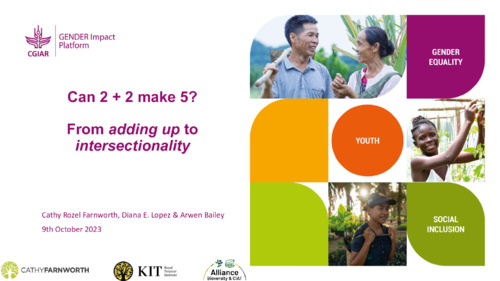Can 2 + 2 make 5? From adding up to Intersectionality
Abstract
The objective of this research is to shift participants away from potentially thinking of intersectional research as being additive, towards developing a shared understanding of intersectionality as about the ways identities combine to create specific sets of opportunities, and challenges, in an agri-food system. Taking an intersectional approach is a way of considering how interwoven dimensions of inequality affect groups of people (and individuals) in the context of a problem and can lead to constrained spaces for them to make and act upon decisions. Traditionally, gender researchers have started with ‘gender’ as a unit of analysis before addressing other dimensions: for example, identifying the structures that influence women, and then narrowing down within the category of women to young women, or landless women, or scheduled caste women. We call this an additive approach. This approach can result in a hierarchy of interventions (e.g., capacity development targeted at young women). Whilst there are some advantages to this approach, it can fail to analyze the most important ways in which these dimensions interact with, and reinforce each other (for instance, that young women may not be able to easily negotiate cultural norms that deny them agency). Introducing gender, social justice and equity into complex systems with the objective of creating gender-transformative change requires an understanding of how these different dimensions interact and play out. This is where intersectional research adds value.

